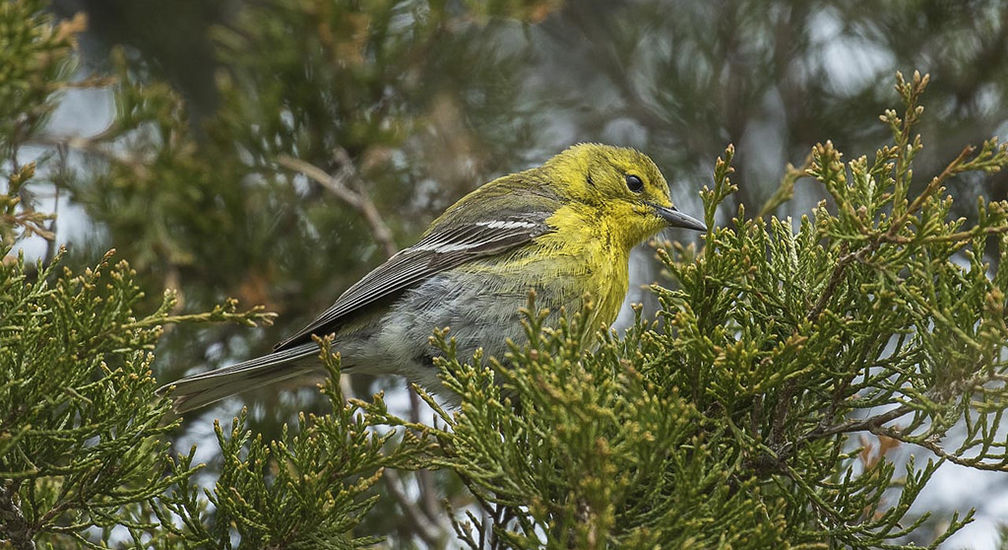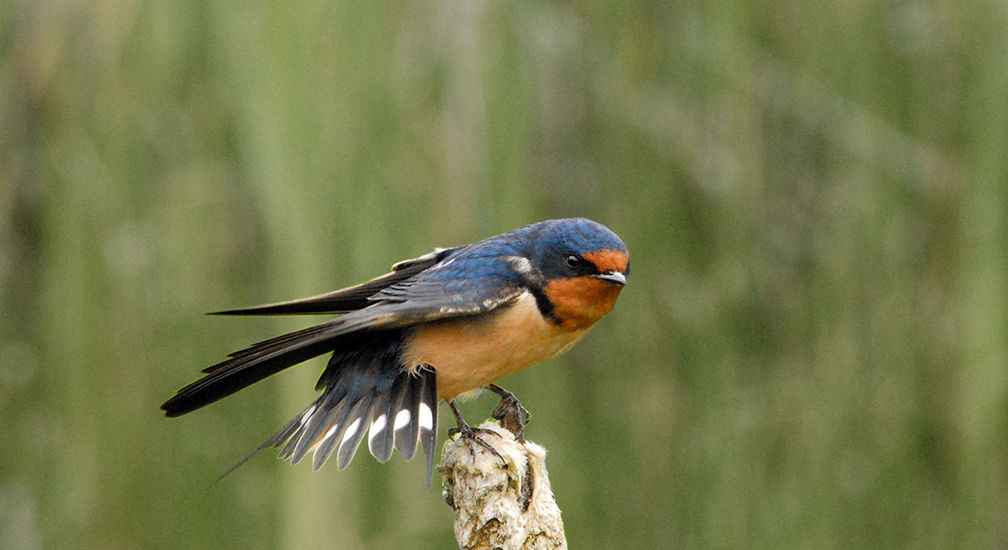Ontario Nature Blog
Receive email alerts about breaking conservation
and environmental news.
© Lora Denis
Great blue heron © Peter Ferguson
The start of fall is an exciting time for bird enthusiasts as summer fledglings become air-borne adults and join others of their kind on route to warmer climes. This mass exodus is happening all around us.
When we talk about bird migration, most people think of spring. They don’t realize that the fall migration features an incredible variety of species that can be seen from late August through to early November.
Birds embarking on their journey south have been spotted throughout Ontario – with many hawks, hummingbirds, waterfowl and warblers already on the move. The coming months will showcase scores more.

During a leisurely evening stroll you may spot swallows, swifts or nighthawks as they swoop and dart after the insects they eat. If you head to Lake Ontario or Lake Erie, you may see a turkey vulture or even a golden eagle.

Sadly, many Canadian bird populations have experienced significant declines over the last 40 years. In Ontario, habitat loss threatens grassland and wetland birds, and songbirds are killed by cats and collisions with buildings. But not all of the news is bad. Restrictions on pesticide use have helped falcons, hawks and other raptors to recover in recent years.
You can see many of the diverse bird species traveling through Ontario this fall by joining a local birding hike. Ontario Nature’s provincial partners including The Ontario Field Ornithologists and Bird Studies Canada, and numerous local Ontario Nature member groups lead walks to birding hot spots across the province.

You can also visit a bird observatory or bird banding station to help researchers and other volunteers count the birds that pass by. It’s a great opportunity to learn about Ontario’s avian wildlife while collecting important data that biologists will use to develop conservation strategies for species in decline.
There are also several easy ways you can help protect migrating birds in your own backyard.
So, while you are enjoying the cooler temperatures and changing leaf colours, look up. There is a lot more going on this fall than you may realize.

Gananoque Lake Nature Reserve © Smera Sukumar
Lisa,
My wife and I live on the bench of the Niagara Escarpment between Queenston and St. David’s, ON. There are two vineyards close by that are using propane powered cannons from sunrise to sunset, seven days a week to keep birds from eating any of their grapes.
Would you consider this tremendous noise, every 3 minutes disruptive to migratory non game birds, and could the explosions actually damage their hearing structures? We have been seeing dozens of eastern bluebirds in our back yard recently, and some birds of the boreal forest that overwinter in Niagara.
The use of these cannons is allowed by OMAFRA as a normal farm practice. A group of local citizens is challenging that position.
Thank you for your input.